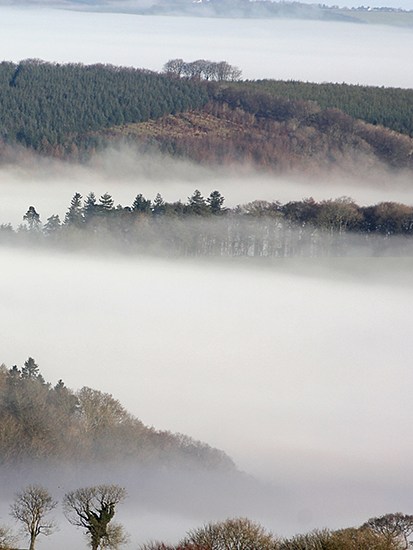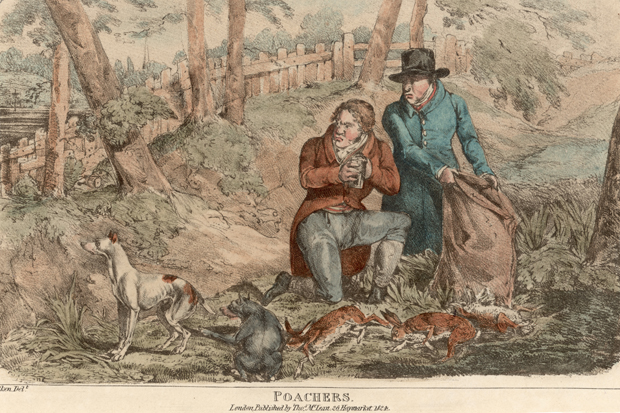In his poem ‘Eden Rock’, Charles Causley conjures up a dreamy memory of a childhood picnic ‘somewhere beyond Eden Rock’. He reported later: ‘Somebody asked me the other day where Eden Rock is —I mean I have no idea, I made it up! “Dartmoor,” I said — that’s always a safe answer.’
As southern England’s largest expanse of unenclosed land, Dartmoor has always been a good place to lose things: dangerous prisoners, children on their Duke of Edinburgh’s Awards, military manoeuvres. It has also swallowed up voluminous amounts of parliamentary time, ministerial reports, public enquiries and arcane legislation — all of which centres on one simple question: what’s it for?
Matthew Kelly’s Quartz and Feldspar charts the response to this question from the late 18th century to the present day. If you live around the moor or are a frequent user of the A30, you will remember with a faint nostalgia the queues through Okehampton (dubbed the ‘capital of the Devonshire Highlands’) and the 20 years of highly principled discussion about whether or not the integrity of Dartmoor National Park should be compromised by the building of a bypass (it was). You may also recall a similar argy-bargy over questions of radio masts, reservoirs, artillery ranges, conifer plantations and commoners’ stocking levels.
For the most part, however, Kelly’s exhaustive case-study presents something rather more interesting. It proves how radically and how frequently our convictions have shifted when it comes to perception of landscape, and how reactions to such a tract of featureless moorland reveal more about the underlying values of each age than almost anything else.
After the antiquarians had laid their Druidic interpretation over the moor’s archaeology and the Romantics had sighed at its craggy heights, the ‘improvers’ arrived. These mid-19th-century worthies looked at Dartmoor and saw something akin to a lost soul, in need only of a little injection of hard work to help it fulfil God’s plan and yield benefits for the common good. Open moorland should be enclosed, soils enriched and planted with crops, herds brought in and a railway built, whose cost would soon be redeemed by profitable agriculture.
Almost none of that had happened by the time a new tribe of idealists emerged. In 1877, a letter in the Times proposed for the first time that Dartmoor might be seen as ‘an invigorating breathing space… a playground of the forces of Nature’. The letter announced the establishment of the Devonshire Association to protect the moor from ‘disfigurement by vain attempts at improvement by enclosure’.
Thereafter, the idea grew that Dartmoor’s open space was its principal asset. Conservation as we now recognise it began to take shape. The moor’s archaeology was mapped out; stone crosses were propped up and cemented. Across the nation as a whole, rural landscape became valued not just as a source of food, but for its capacity to enrich the soul. In the 1930s and 1940s, planning law was extended from the city out into the country. After years of debate, the first ten national parks were designated in the 1950s, Dartmoor among them.
But for Devon’s great moor, national park status only increased the clamour of discussion about what was to go on inside it. To what extent is the landscape anthropic, the result of man’s activities? And to what degree should current activities be allowed to affect it? Does the park exist for ‘us’ or for its ecosystems? Biodiversity is the most recent of the Post-it notions to be stuck at the top of the park management’s board. Somewhere beneath appears ‘rewilding’, the removal of the last traces of grazing to let raw nature take over, to see whether broad-leaved woodland re-establishes itself, or is nibbled out by fallow deer, and whether that population — currently without natural predators — might be kept in check by lynx.
So perhaps there lies the answer to the ‘What’s it for?’ debate. National parks like Dartmoor should not be seen merely as reserves for ramblers or birders, or for biodiversity and rare habitats, but as the testing-ground for our big ideas about the world. In which case Kelly’s fine book, with its rigorous deconstructionist approach, acts as a better guide to the moor than any hikers’ map.
Got something to add? Join the discussion and comment below.
Get 10 issues for just $10
Subscribe to The Spectator Australia today for the next 10 magazine issues, plus full online access, for just $10.
Philip Marsden’s Rising Ground: A Search for the Spirit of Place (Granta) is out now in paperback. Available from the Spectator Bookshop, £20 Tel: 08430 600033
You might disagree with half of it, but you’ll enjoy reading all of it. Try your first month for free, then just $2 a week for the remainder of your first year.














Comments
Don't miss out
Join the conversation with other Spectator Australia readers. Subscribe to leave a comment.
SUBSCRIBEAlready a subscriber? Log in